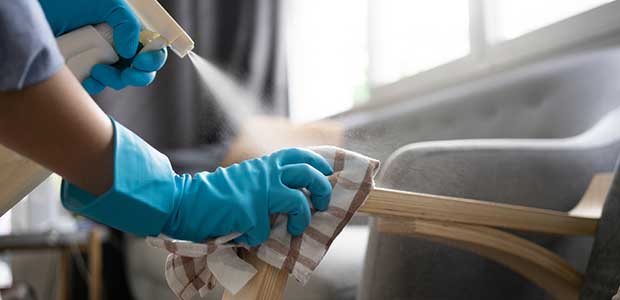
How Housekeepers and Domestic Helpers Can Return to Work Safely
The pandemic is still here, but domestic helpers and housekeepers need to work and families want the services. How do both parties resume work safely? The answer is about trust, safety and communication.
Earlier this spring, at the start of the pandemic, most housekeepers and domestic helpers were sent home like the rest of us for lockdown. However, they do not have the luxury of working remotely, or taking time off—as many rely heavily on every paycheck they get. As communities begin to reopen, people are wondering how safely allow your domestic helpers and housekeepers back in your home while ensuring your safety and theirs.
One New York Times article puts the answer out on the table: doing so safely is about trust, communication and being smart.
If you are an employer and are thinking about allowing housecleaners, nannies and health aides back into your home, there are a few things to remember:
- It is the worker who faces the biggest risk of being exposed to your germs and those of other houses where they work.
- Take practical steps to keep the worker healthy, including providing masks and gloves, opening windows, offering paid sick leave etc.
While there is risk that you could get sick from someone entering into your home, there is much more evidence that “essential workers who are in frequent contact with people are the ones getting sick (most often)—not the customers,” said Shan Soe-Lin, a lecturer at Yale University and managing director of Pharos Global Health Advisors.
Trust and communication are key. Often times, domestic workers do not feel comfortable raising issues about health, safety and pay so the employer should start the conversation. Ways to foster trust and communication include:
- Promise sick pay and encourage workers to stay home when they feel ill or have a fever or any respiratory symptoms.
- Reassure your employee that if someone in your home becomes ill and the worker needs to stay home, you will not dock their pay.
- Offer temperature checks (but remember that a fever is not a reliable indicator of health).
- If possible, leave the house when workers are inside completing the job.
- Open as many windows and doors as possible when workers are inside to allow for ventilation.
“The trust has to go both ways,” Dr. Soe-Lin said. “You have to tell your housekeeper when someone in your home isn’t feeling well.” Unfortunately, many domestic workers and housekeepers are finding that safety responsibility is falling on them, and there is little mutual communication between parties.
The Economic Policy Institute reports that in the U.S. alone, about 2.2 million people (most of them women) are employed as domestic workers. A survey from the National Domestic Workers Alliance says that about 70 percent of domestic workers lost all wages and jobs when the pandemic prompted shutdowns.
Now that lockdowns are being lifted and communities are reopening, many domestic workers are not getting rehired. Many who are working again are finding that employers are paying less than before the pandemic.
One housekeeper who has had slow work since March and whose husband, who works in construction, is out of work, expressed her frustration. “Lots of people don’t care about their domestic employees,” said Betania Shephard. “House cleaners are so important, more valuable than anything during this pandemic because we clean so that nothing is contaminated,” she said.
Experts recommend reconsidering quarantine and tightening your restrictions if case counts in your community rise above five percent. The Domestic Workers Alliance has created online return-to-work guides for employers.
Remember that if you are an employer of anyone who comes into your home for care or cleaning, you should approach the situation with mutual agreements about safety and health.